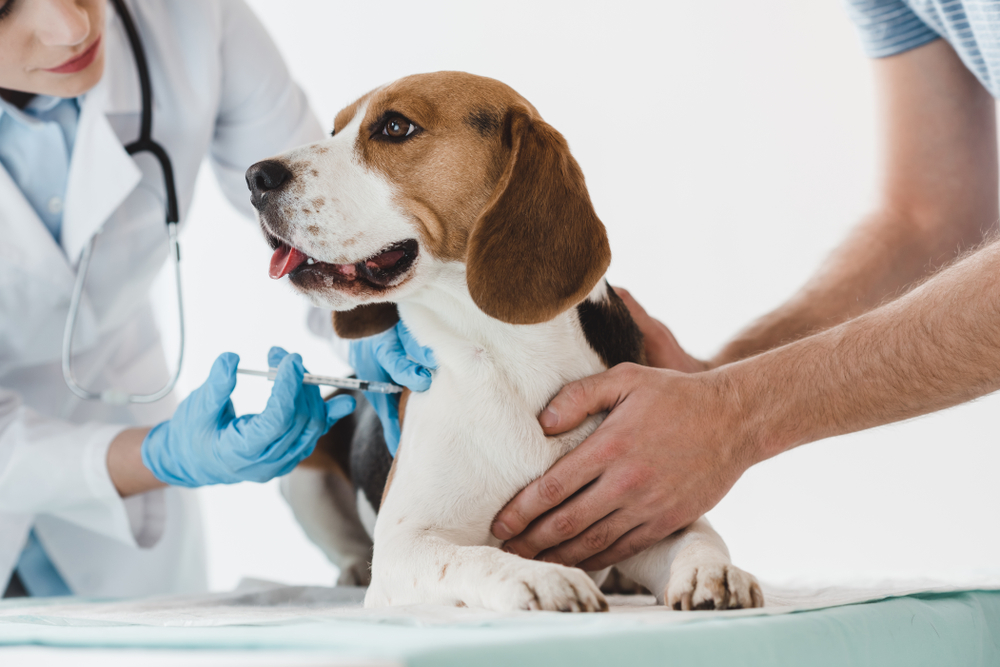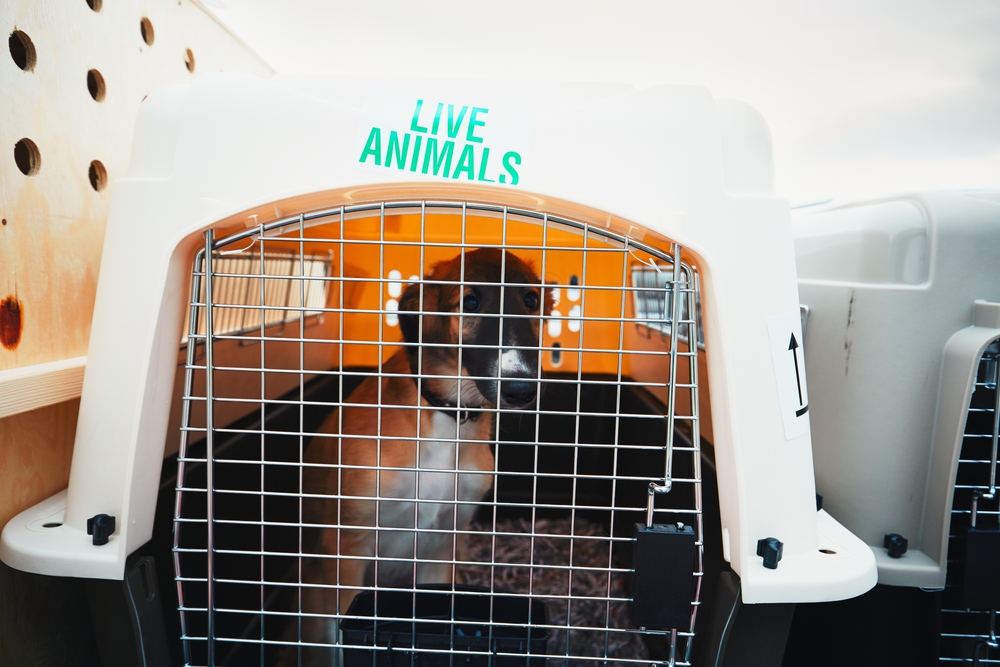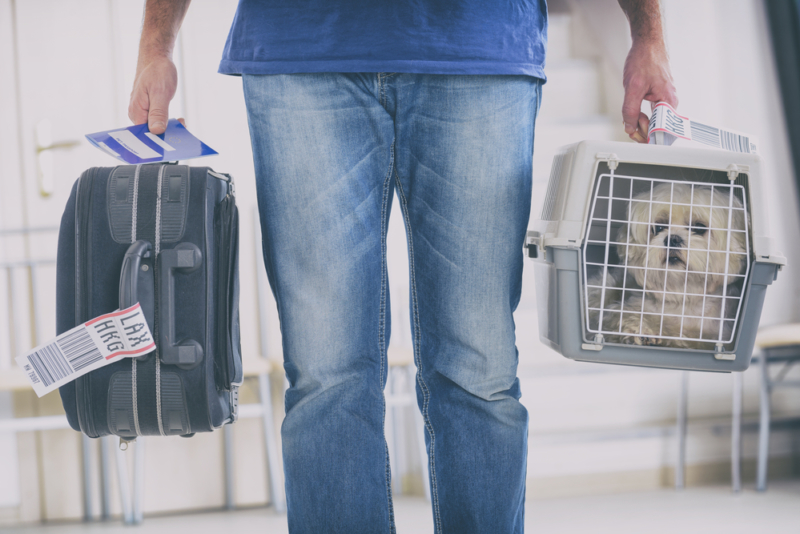For some people, deciding whether or not to bring their pet with them is one of the hardest parts of the whole move to Japan. The stress of the travel on the animal, the difficulty in finding a pet-friendly home in Japan, and the expense can all be off-putting. Read this guide to make sure you have all the information you need before buying air passage for your pet.
The Steps to Bringing Your Pet Into Japan

Successfully bringing a pet into Japan is all about preparation. The good news is that it is very possible to bring your pet with you when moving to Japan. The bad news is that you will most likely need to start preparing your pet for the move at least half a year before your intended arrival date. Follow the instructions carefully though, and you will be reunited with your furry pal in no time!
Is Your Country on the Non-Designated List?
Japan has categorized the countries of the world into two areas depending on the rabies status of the country: Designated regions (rabies-free areas) and Non-designated regions. First of all, find out if your home country is on the designated or non-designated list. The designated regions are Iceland, Fiji Islands, New Zealand, Australia, Hawaii, and Guam. Note also that for your cat or dog to qualify as being from one of these regions, it must:
- Have continuously resided in the designated region since birth; or
- Have continuously lived in a designated region for at least 180 days immediately before moving to Japan; or
- Have resided continuously in a designated region since being directly imported from Japan
If your pet is not from one of the designated regions or has resided there for fewer than 180 days, it must be subject to quarantine upon arrival in Japan to compensate for the insufficient days (180 days minus the days when it was kept in a designated region)
If your pet qualifies as being from a designated region or not, you’ll have to pay attention to all the following steps to safely bring your pet into Japan, with some differences depending on the designation.
Step 1: Microchip Implanting (Both Designated and Non-Designated Regions)

Regardless if your pet is from a designated region or a non-designated region, this is a requirement for all cats and dogs coming into Japan. The microchip has to meet ISO standards recommended for Japan (ISO 11784 and 11785), and it has to have been implanted BEFORE the first rabies vaccine.
Step 2: Rabies Vaccinations (Non-Designated Regions Only)

All cats and dogs coming into Japan from a non-designated region must have had at least 2 rabies vaccinations. The first of these must have occurred when the pet was at least 91 days old. As mentioned, the rabies vaccinations must also have happened after the pet was microchipped.
The second rabies vaccine must be more than 30 days after the first rabies vaccination while remaining within the effective period. This means the second vaccine must be given within the duration of immunity provided by the first vaccine. There are a variety of different rabies vaccines available, with effective periods ranging between 1 and 3 years.
Be aware that if the effective period of the second vaccine expires before your move to Japan, you will need to start the whole process again from the start. So make sure to ask about the effective period of the vaccine so you are not caught off guard.
Live virus vaccines are not accepted, so make sure your pet receives an inactivated or recombinant/modified vaccine.
Step 3: Rabies Antibody Test (Serological Test) (Non-Designated Regions Only)

During the rabies titer test, your pet’s blood will be drawn and its rabies antibody tested to check for rabies immunity in your pet. It must be performed for all cats and dogs coming from a non-designated region at a designated laboratory, and only after the second rabies vaccine has been received. A list of designated laboratories can be found on the Ministry of Agriculture, Forestry, and Fisheries (MAFF) website. If your country does not have a designated laboratory then a blood sample drawn from your pet will have to be sent to a lab in a different country.
This is an essential step, as the results will be checked during the import inspection, so make sure you receive the certificate, and that it’s the original copy. If you are concerned about it you can contact the laboratory you intend to use and ask them any questions you have about the test. In case the antibody levels don’t meet the required standard be sure to consult a vet to find out whether to wait a while before having the animal tested again, or to have the animal vaccinated again.
Step 4: Waiting Period – 180 Days or More (Non-Designated Regions Only)

This one catches many people out, as it is a surprisingly long period. You must wait 180 days from the date the blood sample for the antibody test was taken before you can bring your cat or dog into Japan from a non-designated region. You also must make sure that:
1. Your intended arrival date falls within the expiration period for the vaccine, and
2. The arrival date in Japan is within 2 years of the date that the blood sample was taken.
The important date here is the one on which the blood sample for the antibody test was taken, not the date you received the test results. This is the date you should plan your travel around, making sure that your arrival in Japan is no sooner than 180 days after the test was performed and no later than 2 years after it was performed.
Step 5: Advance Notification (Both Designated and Non-Designated Regions)

Whether your pet is from a designated region or a non-designated region, you must notify the Animal Quarantine Service at your chosen port of entry no less than 40 days before arrival. Check here for a list of Animal Quarantine Services in Japan.
The Notification for Import of Animals can be submitted by mail, fax, or email. PDFs of the forms for cats and dogs as well as instructions on how to correctly fill them out can be found on the MAFF website.
Alternatively, the notification can be made online through the NACCS (Nippon Automated Cargo and Port Consolidated System) which is the Animal Quarantine Service’s online application system.
After you have submitted the notification form, you will be issued with an Approval of Import Inspection of Animals which will need to print out. This form will be required at both the check-in counter, and at the import inspection on arrival. Note also that for dogs or cats coming from a non-designated region you should also submit a copy of documents such as the result report of rabies antibody test together with the advance notification to facilitate procedures.
Step 6: Clinical Inspection Before Departure (Both Designated and Non-Designated Regions)

All cats and dogs both from designated regions and non-designated regions will need to undergo a clinical inspection at the vet or animal clinic in their home country before departing for Japan. This inspection is to check for any signs of rabies, and, in the case of dogs, leptospirosis. The health certificate needs to be validated by your country’s governing authority responsible for the import and export of animals.
Step 7: Certificates Issued by the Government Agency of the Exporting Country (Both Designated and Non-Designated Regions)

Regardless your pet is from a designated region or a non-designated region, you will also need to obtain a Country of Export Certificate. This certificate must be issued from the government agency in your home country that corresponds to Animal Quarantine Service in Japan. The certificate must contain the following information:
- Your pet’s individual information, such as name and date of birth.
- The microchip number and the date it was implanted.
- Information about your pet’s rabies vaccinations, such as dates they were received, their effective periods, and type of vaccine (only for pets from non-designated regions.)
- The date the blood test was taken for the rabies antibody test, and the laboratory to which it was sent (only for pets from non-designated regions.)
- The date and result of the clinical inspection before departure.
- Seal number (if the transport cage is sealed) (only for pets from designated regions.)
You can ask your private vet to fill out Form AC for non-designated regions and Form AB for designated regions for you, before sending it to the government agency of your home country to be endorsed.
Note also that some further regulations that must be followed regarding the transportation of pets:
- Dogs and cats should ideally be imported through direct flight or ship.
- In case they transit through a non-designated region you also need an additional seal on the transport cage by a veterinary officer of the government agency of the exporting country and an additional certificate on transportation (ANNEX).
- Must land in a designated airport or seaport that allows animals. The list of airports can be found at www.maff.go.jp/aqs/english/contactus.html
Step 8: Import Inspection (Both Designated and Non-Designated Regions)

Whether your pet is from a designated region or a non-designated region, upon arrival in Japan you need to go through an import inspection at your chosen port of entry. The inspection is carried out by Animal Quarantine Service.
For the import inspection, you must have:
- Approval of Import Inspection of Animals
- Certificates issued by the government agency of the exporting country (originals) mentioned in step 7
- Result report for the rabies antibody test (only for non-designated regions.)
- Additional certificate on transportation ANNEX if needed (only for designated regions.)
- Application for Import Inspection (online system NACCS) and a copy of Air Waybill or Bill of lading (only for cargo transportation.)
You might also want to keep at hand:
- Notification of Import of Animal
- Health Certificate
- All records of your pet’s rabies vaccines
If you have followed all the steps successfully, you will be issued with an Import Quarantine Certificate. The inspection can take up to 12 hours but is usually quicker and once you have this certificate you can take your pet to your new home.
However, if any problems are found at the import inspection, then your pet could be facing a lengthy quarantine of up to 180 days. If this is the case, you will be responsible for covering all the costs of care for your pet during this time. The actual day-to-day care of your pet can be entrusted to a caretaker company at your expense. While you will be allowed to visit your pet in quarantine, the hours and number of visitors are restricted.
What You Need to Do After Successfully Importing Your Pet

If all goes well and your pet has avoided quarantine, there are still a few official steps that need to be taken after you have arrived in Japan.
- Firstly, don’t lose the Import Quarantine Certificate. If you have a dog, you will need to present this certificate to your municipality in Japan within 30 days of arrival. You will also need this certificate if you decide to export your pet, so keep it safe.
- You will need to have your dog vaccinated against rabies once a year while you are in Japan.
- It is a good idea to have your pet’s microchip number registered domestically, and you can use your Import Quarantine Certificate to do this.
Things to Consider When Bringing a Pet Into Japan

The Expense
Every airline charges a different fee for pet travel, and the cost can be considerable. It is a good idea to check prices with different airlines and find out what regulations they have for pet travel. For instance, some airlines will have specific crate requirements, often necessitating a special purchase. This will add to the overall cost of transporting your pet.
It is also worth bearing in mind that airlines often change their regulations regarding pet travel. So if you previously were allowed to travel with your pet in the cabin, that might no longer be the case. Contact your chosen airline before booking to make sure you understand what conditions your pet will be traveling in.
Pet-Friendly Housing
As with many countries, finding a home to rent that allows pets is not an easy task here in Japan. If you are moving to a big city like Tokyo, you will also have to think about how much space your pet will need. Apartments in the city tend to be smaller than those from many foreign home countries, making it difficult to find adequate space for a pet. This is particularly true if you have a larger dog, or require a decent garden.
If you have an outdoor cat, you will need to consider access to the outdoors. It is unlikely that rental apartments will come equipped with a cat-flap. It is also a good idea to choose a cat-friendly neighborhood, that has low-rise buildings and less traffic.
Pet Insurance and Animal Clinics

Whether or not to get pet insurance is up to you, but be aware that the costs of animal care can be very high. Opting for pet insurance can save you money down the line, but it is worth researching deals before you arrive so you can factor in the costs.
Access to an animal clinic that suits your needs may be harder than you think, especially if you require English-speaking staff. Choosing a neighborhood with a vet that works for you can save you a long commute with your pet. There are quite a few English-speaking animal clinics in Tokyo. For clinics with English-language websites check out West Cross in Nakameguro, La Vie Clinique Vétérinaire in Higashi-Gotanda, Toranomon Veterinary Clinic in Toranomon, and Daktari clinic which has a number of locations in Tokyo and offers 24/7 emergency care for your pet.
Pet Food and Supplies
There are plentiful options for pet food in Japan. Most grocery stores will sell pet food, but if you want a larger selection then you can try the pet section of Tokyu Hands. The prices here may be high, but the quality and selection are good. Buying in bulk can also be a wallet-friendly option. Check out the larger branches of Kohnan, which has shops across Tokyo and stocks bulk options of both Japanese and Western brands. You can also buy pet food online, and you may find that your favorite brand from your home country is available from an online retailer at a reasonable price.
Kitty litter is more of a problem in Japan. If you are used to clumping, odor-resistant brands of kitty litter, then the Japanese offerings may be disappointing. Bringing stocks of kitty litter from your home country when you move will save you the very high prices charged for western brands of kitty litter here in Japan.
What you will find in Japan are the ingenious dog pads, designed as a safe spot for your dog to do its business when it can’t get outside. Highly absorbent, anti-bacterial and odor-resistant, they are a useful addition to your home for those emergency moments.
Pet Etiquette
It is important to familiarize yourself with local customs for keeping pets. For example, if you have a dog you must pick up its droppings and dispose of them yourself. This means bringing little bags with you on every walk and being prepared to carry them with you after your dog has done its business. It is also common to bring a squeezy bottle of water to spray over dog wee. Dogs must be kept on the lead at all times, except in designated areas. Preparing yourself and your pet for these customs before arrival will help to make the transition easier.
Be Prepared
The best way to ensure a successful transition for your pet is to be fully prepared, and to follow the rules to the letter. If you follow all the steps correctly and have the necessary documents ready, then you will quickly be reunited with your pet on arrival in Japan. If you have any questions or concerns, then contact Animal Quarantine Services or an animal organization here in Japan and find out what you need to know.
If you want to give feedback on any of our articles, you have an idea that you’d really like to see come to life, or you just have a question on Japan, hit us up on our Facebook!
The information in this article is accurate at the time of publication.

